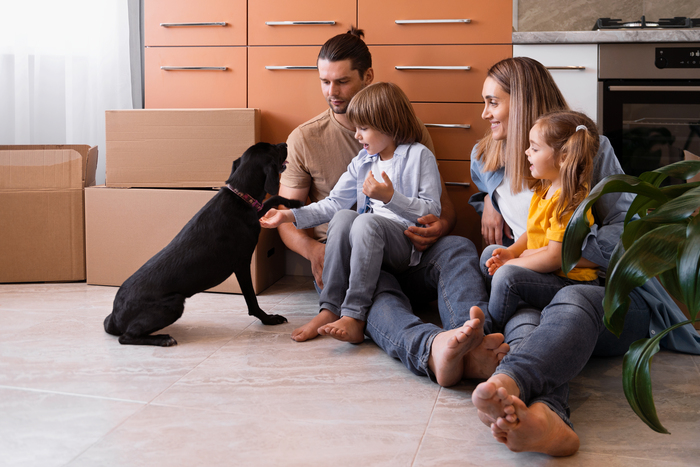2022-12-20
Having a pet means receiving unconditional love, enjoying the companionship of another living being, as well as bearing a big responsibility. That is why we need to take our time to carefully consider all the factors associated with raising a pet. We should make sure that we make the right decision not only for us but also for the other family members in the household and the pet him/herself.
Today’s article is directed to those of you who are considering getting a pet and may need to think about the process of raising a pet from a different perspective.

As exciting and funny as it may sound, raising a living being is not a game, and you should take this seriously. Some pets such as dogs require regular walks, grooming (based on the breed), bathing, feeding them quality food (valid for all pets), training, and teaching them how to function as a part of your family and behave around other people and animals. Even if you opt for a pet, who is not so demanding, there are certain activities you won’t be able to avoid, i.e. feeding, daily providing fresh water, and cleaning up. Also, you will need to bring your pet to a vet for an annual check (If he/she is a dog) and keep him/her up to date with all mandatory vaccinations. As you can see, you should be ready to commit if you really want to raise a pet.
This is partially connected to the point above, as you will need to invest time into activities that have not been a part of your life to this point. Being able to adapt your lifestyle to raising a pet, or rather getting a pet who will suit your lifestyle might not be as easy as it may seem. We may want to have an energetic dog of a large breed and imagine how nice it would be to raise him/her. However, in reality, this choice might not be the best one for our calm lifestyle and vice versa- we can not expect a non-energetic dog to keep up with our dynamic pace of living. Further examples can include cats and their innate instinct to scratch and climb objects. If you can not stand a cat having access to your furniture or valuable items, you will need to take relevant actions to protect these or maybe opt for a different type of pet.
Cords, potentially toxic plants, small items that can easily be ingested, sharp items, cleaning detergents, and food that is poisonous for pets, e.g. xylitol, chocolate, onions, garlic, and grapes/raisins, are toxic for dogs and cats... There are many items in your home that may be dangerous for your new family member. If you live in a house and would like to get a dog or a cat, you will need to think about if the backyard/garden is protected as well. This may include putting up a fence, preventing your pet from going outside right after the garden has been sprayed against parasites/ weeds, getting rid of dangerous plants, and always cleaning up after yourself to avoid the possibility of any items you have used to be chewed and ingested by your pet.

In case your household includes more than one person, you should make sure that your family members are on the same page as you. This is important for different reasons, i.e. you can find out how they will participate in raising and eventually training the pet (who will feed, walk and clean after the animal); what approach will be utilized in regard to different aspects of raising the pet (where will be the pet’s feeding and sleeping spot, will he/she be allowed on the furniture and beds...etc.)- the mote unified the approach is, the better; who will take care of the pet in case everybody is at work/school...etc. There are many things that should be discussed so that both the family members and the pet feel comfortable.
Providing your pet with the most suitable supplies based on his/her specie and needs is associated with knowledge and money. You will need to adapt your pet’s food to his/her age and breed/specie and consult a veterinarian about what type of diet would be the healthiest option for him/her. A healthy diet should be balanced and provide all the nutrients needed for the body to properly grow and develop. You will need to choose what material the food and water bowls will be made of and where in your home they will be placed. It is the same case with the bedding and its location-you should think about what type of bed your pet will have and where it will be placed. Toys, including chew toys, chase toys and tug toys (for dogs), scratching and climbing toys (for cats) and puzzle toys (for both species) will be needed to keep your pet physically and mentally stimulated. Based on the specie, you may need to have a leash, a collar, a litter box, and a crate. Additional supplies that may be used during the early stage of your pet’s life are pet gates.
You may need to do research to find good veterinarians, groomers, trainers, and food manufacturers. Finding a good veterinarian in your area is crucial for all pet owners. Whether bringing your pet to a vet’s office for a routine exam, getting him/her vaccinated, or having him/her treated in a case of illness or accident-your pet’s veterinarian should be professional and reliable. Also, it is important for most pet owners that the vet uses an approach that matches their philosophy, i.e. be very affectionate when handling the pet and showing genuine care. In case your pet (usually a dog or a cat) will need to go through regular grooming to have his/her coat neat, you will need to also look for a groomer. A professional trainer might be needed for owners who want their dog or cat to go through basic or more advanced training. Of course, this is valid for people who do not have the time, and energy to conduct training themselves or just want to rely on the knowledge of a professional.
During the first weeks or sometimes months of your pet’s life in his/her new home, he/she may have difficulties adapting. Whining, chewing, or having some home incidents are common things that accompany the early stage of a pet’s life (usually a puppy). You should not lose your temper or try to soothe your pup in all possible ways including giving him/her treats and allowing him/her access to areas he/she won’t be allowed. It is always recommended that owners remain calm and patient and give their new family members time to adjust. You can arrange an area in a quiet, but not isolated spot, preferably confined and supplied with plush toys and other cozy items, such as a blanket, a towel, or bedding. Supervising your pet during the day will prevent him/her from getting into dangerous situations, so it is always recommended, especially during the period of adjustment.

The adjustment period may take a longer time, in case you already have pets. You should not force your new family member to engage in any activities with the other pets of the household. Give him/her time to adapt and set up a quiet and comfortable area for him/her. A tip that might be helpful in this case is providing both the new pet and the current one(s) with items that have the scent of the other animal on them. Let them get used to each other’s scent prior to introducing them. We would recommend that you prepare supplies for each pet and not let them feel like competitors for food, toys, or other supplies.
You may want to consider putting an ID tag, a collar, or an ID card on your dog or cat. That way you will make sure that he/she will be returned to you in case he/she gets lost. Many pets end up in shelters due to a lack of identification. Having the name of your pet, your name as an owner, and your phone number printed or engraved on any type of identification gear is recommended.
Getting your pet microchipped is another way to ensure that he/she will be brought back to you in case he/she gets lost as microchips work as permanent identification.
Neither spaying nor neutering a pet is mandatory. However, these procedures have become routine, and they bring benefits to your pet’s health and you as an owner. The chance of having tumors of the mammary glands and uterus infections for female dogs decreases. For male dogs, this procedure decreases marking, and roaming and reduces the risk of prostate issues. Also, taking care of your pet’s litter is another task, you will need to bear the responsibility for if you do not spay/neuter him/her. Finding the right home for the pups (also valid for kittens) from the litter is not easy. Taking care of multiple pets is also a difficult task, associated with investing a lot of time and money.